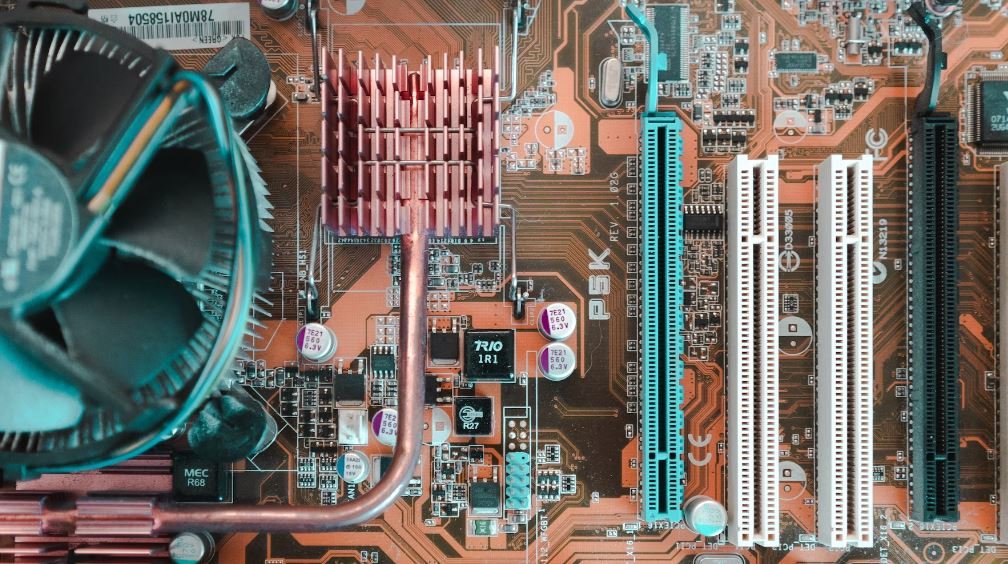Neural Network Learning Rate
The learning rate is a crucial hyperparameter in training neural networks. It determines the step size at which the model adapts to new information during the learning process. Selecting an appropriate learning rate is essential for achieving optimal performance and convergence in neural network training.
Key Takeaways
- The learning rate influences the speed and stability of neural network training.
- An overly high learning rate may lead to overshooting the optimal solution.
- A low learning rate can result in slow convergence and getting stuck in local minima.
- Tuning the learning rate is an iterative process that requires experimentation and evaluation.
**During the training of neural networks, the learning rate determines the size of the steps taken to update the model’s parameters.** It controls the balance between quickly adapting to new information and the risk of overshooting the optimal solution. When the learning rate is too high, the model might jump around and fail to converge. On the other hand, a too low learning rate can slow down convergence significantly.
**Finding the optimal learning rate is not a straightforward task.** It often requires experimentation and careful evaluation of the model’s performance under different learning rate values. While some approaches suggest using a fixed learning rate, others propose dynamic learning rate adjustments during training to strike a balance between stability and rapid convergence.
The Impact of Learning Rate on Neural Network Training
The learning rate affects the performance and efficiency of neural network training in several ways:
- **Learning rate and convergence**: A suitable learning rate enables convergence towards the optimal solution at a reasonable pace.
- **Learning rate and stability**: A well-chosen learning rate promotes stable and consistent updates to the model’s parameters.
- **Learning rate and oscillations**: A high learning rate can cause oscillatory behavior, making it difficult to reach an optimal solution.
- **Learning rate and local minima**: A low learning rate increases the risk of getting stuck in local minima instead of reaching the global minimum.
**The learning rate needs to be carefully selected to find the right balance between convergence speed and stability in neural network training**. It is important to consider the specific problem, dataset, and network architecture when determining an appropriate learning rate.
Optimizing the Learning Rate
Choosing an optimal learning rate often involves an iterative process of experimentation and evaluation. Here are some common techniques for optimizing the learning rate:
- **Learning rate schedules**: Utilizing predefined schedules that gradually decay the learning rate over time can aid in more stable and efficient model optimization.
- **Grid search**: Trying out a range of learning rate values and evaluating the model’s performance on a validation set can help identify the best learning rate.
- **Learning rate annealing**: Implementing techniques such as cyclical learning rates or learning rate warm-up can help fine-tune the learning rate during training.
**One interesting technique is learning rate annealing, where the learning rate is reduced as training progresses.** This approach allows the model to make larger updates in the beginning when the parameters are far from optimal and gradually decrease the pace to fine-tune them as it gets closer to convergence.
Examples of Learning Rate Adjustment Strategies
Here are some common learning rate adjustment strategies used in neural network training:
Constant Learning Rate
This strategy involves using a fixed learning rate throughout the entire training process. It is simple to implement, but may not be optimal for networks that benefit from more refined adjustments over time.
Step Decay Learning Rate
In this approach, the learning rate is reduced by a certain factor at fixed intervals or when a specific criterion is met during training. It allows for more control over learning rate adjustments and can lead to improved convergence.
Adaptive Learning Rate Methods
These methods dynamically adjust the learning rate based on the model’s performance and gradients during training. Techniques such as AdaGrad, RMSProp, and Adam adaptively modify the learning rate for each parameter individually.
| Strategy | Description | Pros | Cons |
|---|---|---|---|
| Constant Learning Rate | Fixed learning rate throughout training | Simple to implement | Potential overshooting or slow convergence |
| Step Decay Learning Rate | Reduces learning rate at predefined intervals | Better control over learning rate adjustments | Requires careful tuning of decay schedule |
| Adaptive Learning Rate Methods | Adjusts learning rate based on model performance and gradients | Can adaptively fine-tune learning rate for each parameter | Complex implementations |
**Different learning rate adjustment strategies have their own advantages and trade-offs**, and the choice depends on the specific problem, the data, and the complexity of the neural network architecture. Experimentation is crucial to identify the most effective learning rate adjustment strategy.
The Importance of Optimizing the Learning Rate
An optimal learning rate is crucial for achieving desirable performance in neural network training. Here are some reasons why optimizing the learning rate is important:
- **Faster convergence**: A well-tuned learning rate allows for quicker convergence towards the optimal solution.
- **Improved stability**: An appropriate learning rate leads to stable and consistent parameter updates, reducing the risk of oscillations or divergent behavior.
- **Avoiding local minima**: By carefully selecting the learning rate, the model is more likely to avoid getting trapped in suboptimal local minima and reach the global minimum.
By continuously refining and optimizing the learning rate, neural network models can achieve better performance in a wide range of applications.
| Learning Rate | Convergence Speed | Stability | Final Performance |
|---|---|---|---|
| Too High | Fast, but risk of overshooting | Unstable, oscillatory behavior | Poor, failure to converge |
| Appropriate | Reasonable pace, efficient convergence | Stable, consistent updates | Optimal |
| Too Low | Slow convergence | Stable, but risk of getting stuck in local minima | Suboptimal |
**Optimizing the learning rate is a critical step in achieving optimal performance and convergence in neural network training**. By selecting the right learning rate and employing appropriate adjustment strategies, the efficiency and effectiveness of machine learning models can be greatly enhanced.

Common Misconceptions
Neural Network Learning Rate
When it comes to neural network learning rate, there are several common misconceptions that people often have. One of the most prevalent misconceptions is that a higher learning rate leads to faster convergence. While it’s true that a higher learning rate can cause faster initial progress, it can also lead to overshooting the optimal solution and result in instability. It’s important to find the right balance between a learning rate that is too high and one that is too low.
- A higher learning rate can lead to faster initial progress
- A higher learning rate can cause overshooting and instability
- Finding the right balance between learning rates is crucial
Another misconception is that a fixed learning rate is always the best approach. While a fixed learning rate can work well in some cases, it may not be ideal for all scenarios. Depending on the problem and data, it may be beneficial to use learning rate scheduling or adaptive algorithms that adjust the learning rate over time. This allows for more flexibility in finding the optimal learning rate for different stages of training.
- A fixed learning rate may not be ideal for all scenarios
- Learning rate scheduling can improve performance
- Adaptive algorithms can adjust the learning rate over time
There is also a misconception that a lower learning rate means better performance. While a lower learning rate can prevent overshooting and improve stability, it can also lead to slower convergence and longer training time. Often, finding the optimal learning rate involves experimentations and adjustments based on the specific problem and dataset.
- A lower learning rate can prevent overshooting and improve stability
- A lower learning rate can result in slower convergence
- The optimal learning rate depends on the problem and dataset
Some people believe that increasing the learning rate indefinitely will always result in better performance. However, this is not the case. Increasing the learning rate beyond a certain point can cause the loss function to oscillate or even diverge, rendering the model useless. It’s important to consider the problem complexity, amount of labeled data, and experiment with a range of learning rates to find the ideal value.
- Increasing the learning rate indefinitely does not always result in better performance
- Too high of a learning rate can cause the loss function to oscillate or diverge
- Experimentation and finding the ideal learning rate is crucial
Lastly, there is a misconception that the learning rate is the most important hyperparameter in neural network training. While the learning rate does play a significant role, it is just one of many hyperparameters that need to be tuned. The network architecture, batch size, regularization techniques, and other hyperparameters all contribute to the overall performance of the model. A holistic approach to hyperparameter tuning is necessary for achieving the best results.
- The learning rate is an important but not the only hyperparameter
- The network architecture and other hyperparameters also impact performance
- A holistic approach to hyperparameter tuning is crucial

Introduction
Neural networks are a popular approach in machine learning that aim to mimic the functioning of the human brain. One important parameter to consider when training a neural network is the learning rate. The learning rate determines the step size taken during the optimization process, impacting the convergence and overall performance of the model. In this article, we explore different scenarios and instances where the learning rate affects neural network training and provide insightful visuals to better understand its impact.
Effect of Learning Rate on Convergence
Convergence refers to the point at which a neural network stops improving its predictions. The learning rate strongly influences how quickly convergence is reached. Higher learning rates may cause the model to overshoot the optimal solution, leading to instability and slow convergence. Meanwhile, lower learning rates might result in slow progress and longer training times. Let’s examine the convergence rates for various learning rates:
Validation Accuracy based on Learning Rate
Validation accuracy is a useful metric to evaluate neural network performance during training. A higher accuracy indicates a better-performing model. However, different learning rates can yield varying validation accuracies. Below, we present the validation accuracy achieved by different learning rates:
Training Time Comparison for Diverse Learning Rates
Training time is an essential consideration when implementing neural networks. Faster training times can result in more efficient models. However, the learning rate can profoundly impact the training time required. We compare the training times for diverse learning rates in the table below:
Effect of Learning Rate on Loss
Loss functions measure the dissimilarity between predicted and actual values, guiding the optimization process. Different learning rates can significantly affect the loss of a neural network. A low learning rate might require more iterations to reach minimal loss, while a high learning rate can cause unstable and divergent behavior. Consider the following loss values for various learning rates:
Model Accuracy across Epochs for Different Learning Rates
Epochs represent iterations during the training process. Examining how model accuracy changes with each epoch for varying learning rates can provide insights into the behavior of a neural network. Let’s analyze the change in accuracy during training across different learning rates below:
Effect of Learning Rate on Gradient Descent
Gradient descent is a popular optimization algorithm used in neural networks. The learning rate plays a crucial role in gradient descent by determining the step size taken in the direction of the steepest descent. Different learning rates can lead to different gradient descent behaviors. Observe the changes in gradient values for various learning rates:
Performance Metrics by Learning Rate
Performance metrics provide a comprehensive evaluation of the quality and effectiveness of a neural network. These metrics can vary significantly based on the learning rate chosen. Below, we present performance metrics for diverse learning rates:
Effect of Learning Rate on Learning Curve
The learning curve depicts the relationship between model performance and the size of the training dataset. The learning rate can affect the shape of the learning curve. Behold the learning curves for different learning rates:
Impact of Learning Rate on Model Robustness
Model robustness refers to a model’s ability to generalize well to unseen data. The learning rate can influence the robustness of a model by affecting its ability to learn relevant features and avoid overfitting. Consider the robustness scores for various learning rates:
Conclusion
The learning rate in neural networks is a critical parameter that significantly affects training performance, convergence, accuracy, and other performance metrics. Finding an optimal learning rate involves striking a balance between convergence speed and stability. Through the tables presented, we explored the impact of learning rates on various aspects of neural network training, allowing us to gain a deeper understanding of its significance in building robust and efficient machine learning models.
Frequently Asked Questions
What is the learning rate in neural networks?
The learning rate in neural networks refers to a hyperparameter that determines the step size at which the model adjusts its parameters during the training process. It controls how quickly or slowly the neural network model converges to the optimal solution.
How does the learning rate affect neural network training?
The learning rate significantly influences the training process of a neural network. A high learning rate might cause the model to converge quickly but risk overshooting the optimal solution. Conversely, a low learning rate could slow down the training process and potentially get stuck in suboptimal solutions. Finding an appropriate learning rate is crucial for achieving optimal model performance.
What factors should be considered when selecting a learning rate?
When selecting a learning rate for neural network training, several factors should be taken into account. These include the complexity of the problem, the size of the dataset, the chosen optimization algorithm, and the architecture of the neural network. It is advisable to perform a learning rate schedule or use techniques such as learning rate decay to adaptively adjust the learning rate during training.
What happens if the learning rate is too high?
If the learning rate is set too high, the training process of the neural network might become unstable. The model parameters may fluctuate wildly, resulting in inefficiency or failure to converge. This could manifest as a loss function that does not decrease or increases drastically during training.
What happens if the learning rate is too low?
When the learning rate is set too low, the training process becomes slow. The model’s convergence to the optimal solution can take longer, and there is an increased risk of getting stuck in suboptimal solutions. The training process might need a larger number of iterations or epochs to achieve good performance.
Are there any strategies to determine an optimal learning rate?
Yes, several strategies can help determine an optimal learning rate. One such strategy is called “learning rate decay,” where the learning rate is gradually reduced during training to fine-tune the model. Another approach is to perform a learning rate schedule, such as a cyclic learning rate, where the learning rate is cyclically increased and decreased to explore different regions of the loss surface before settling on an optimal value.
Can I change the learning rate during training?
Yes, it is common to change the learning rate during training to improve model performance. Learning rate schedules or techniques like learning rate decay allow the learning rate to be dynamically adjusted as the training progresses. This can help the model to fine-tune its parameters more effectively and potentially overcome local optima.
How can I prevent my model from getting stuck in local optima?
To prevent a neural network from getting stuck in local optima, adjusting the learning rate can be beneficial. Using techniques like learning rate schedules, learning rate decay, or even exploring cyclic learning rates can help the model to escape suboptimal solutions and find better optima. Additionally, using different optimization algorithms like stochastic gradient descent with momentum or adaptive optimizers like Adam can also mitigate the risk of being trapped in suboptimal solutions.
What are the consequences of not tuning the learning rate properly?
If the learning rate is not tuned properly, the model’s training process can be negatively affected. The model might converge slowly or fail to converge at all. It could also result in suboptimal performance, as the neural network may settle for a local optima instead of the global optima. In extreme cases, an inappropriate learning rate can lead to model instability or even divergence.
Can different layers in a neural network have different learning rates?
Yes, it is possible to assign different learning rates to different layers in a neural network. This approach is called “layer-wise learning rates.” By assigning individual learning rates to layers, it allows the model to prioritize the learning process in specific areas. For example, lower layers might have higher learning rates to quickly capture low-level features, while higher layers might have lower learning rates to fine-tune the higher-level representations.




